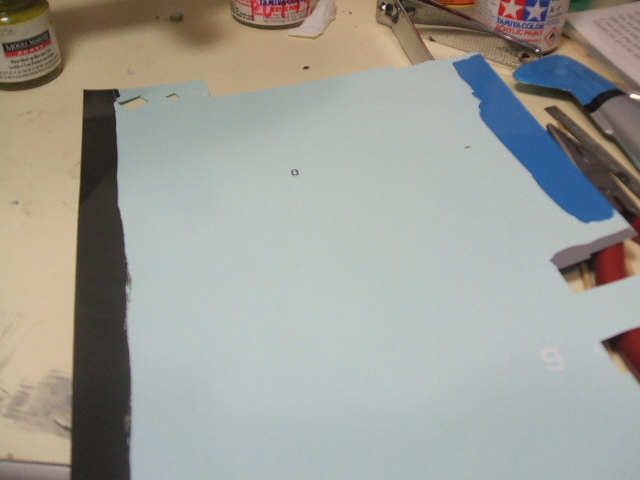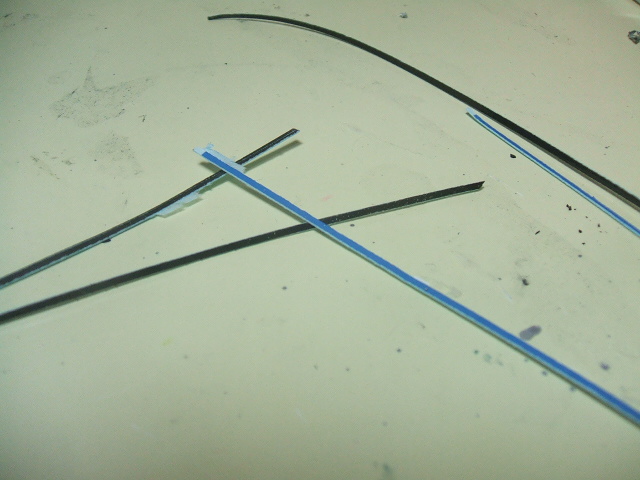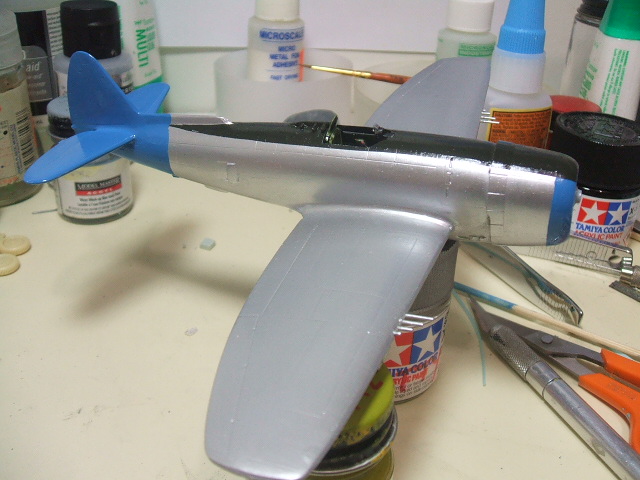
Fine Lines: P-47N Part 10
Several methods are going to be described here, and in doing so I’ll introduce several concepts that may be new to you. I’d like to point out that most, if not all, of my methods were invented independently by me. I’m not claiming that I’m the first one to do these things– I’m sure that’s not true. But for me, in my work, I am the originator. So if you’re wondering (even slightly) where I got all these weird ideas, I’ll just admit right now that I thought it all up. Somebody, somewhere, may have thought of it before I did, but I wasn’t inspired by them. The plastic model kit hobby has been so obsessed with the airbrush for so long that there simply hasn’t been a lot of discussion regarding brush painting.
I hope that changes. But I’m hesitant (very hesitant) to establish a forum and try to moderate it. That’s a real job, mostly due to all the underhanded stuff that goes on in forums, most of which goes on “behind the scenes” and takes the form of so-called “guerilla marketing” which is also just called spam.
Now where was I? Oh yes. Paint.

How did I paint this? The answer is decals. I take a sheet of clear decal film and paint it with a brush. For this job I needed a dark, dark olive drab and a light, bright blue.

I experimented with the High Planes fuselage (on the right) to get the shades I wanted. The decal material is brushed with Tamiya Gloss acrylic paint mixed to match the required colors. Photographs from the period show a very, very dark olive drab that was used for anti-glare panels. I mixed the color by eye. The blue was mixed by eye as well, to match color photos from the period.
The decal material is cut into strips using a steel ruler and a hobby knife.

The strips are cut to length and put in water, briefly, then removed and placed aside to “loosen up.” Once the decal loosens, it’s gently pushed into place using a brush.

Keeping the surface wet using spit and other sanitary fluids, the decal can be pushed around using the tip of a metal file. 
The idea is to define the edges of the painted area.

Finally, the paint is applied inside the area defined by the decal strips.

I still have to paint the black stripe in front of the tail and then “clean up” the edges using strips of black decal. After the paint is dry, a coat or two of clear flat will make the anti-glare panel authentic.
The Tamiya paint has to be applied without brushing over the same spot more than once. If you try the “scrubbing” methods used to apply the Metal Coat you will turn the Tamiya gloss acrylic into a mess.
Once the whole thing is done, it should be set aside carefully to dry, and not touched until it has had a chance to cure. The Tamiya paint dries to a smooth, high gloss finish that does not obscure detail, but it is susceptible to finger prints until it really cures over several days.
The layout of these colors and the colors themselves is based on information available at P-47 Heaven. It’s an excellent source for all information on this type of aircraft.
I know you don’t like product endorsements, but what is the ‘clear decal film’ you use? is it the one for printing your own decals on? You don’t mention whether you sealed the decal film after you painted it. Sorry for sounding like a noob, but i struggle with the black art of decals.
Both good questions. The clear decal film is from Microscale. It’s sold on their website, I believe. It doesn’t require any kind of sealing. I just paint on it, let the paint dry and use it like that. The decal film for printing is a different material. I get that from decalpaper.com –I’m not sure if you can use it without a “sealant.” What I have made is coated with a heavy (probably too heavy) coat of Krylon clear according to the instructions that come with the decal paper. The “clear decal film” from Microscale CAN be used to make decals. You need a laser printer for that and the result does require a coat of “sealant.” BUT if you are going to use an inkjet printer, you need the special inkjet paper from decalpaper.com and you need to seal it, too.
Painting onto decal film (or “trim film” as Microscale calls it) is not the same thing as printing onto decal film. For an inkjet printer, you need a special kind of paper and a sealant. For painting, you need the Microscale trim film and no sealant is required.